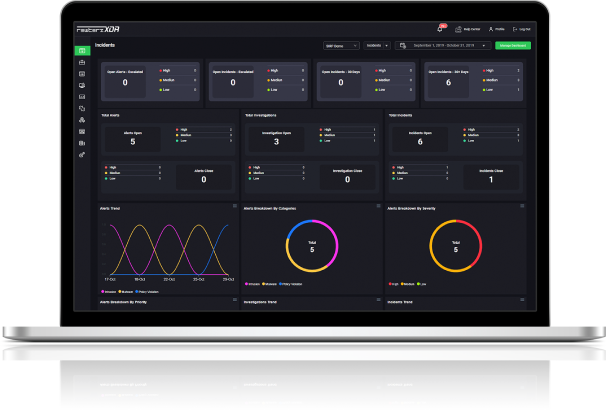

Multiple Intel Products Vulnerabilities
January 14, 2025
AsyncRAT – Active IOCs
January 14, 2025
Multiple Intel Products Vulnerabilities
January 14, 2025
AsyncRAT – Active IOCs
January 14, 2025Severity
Medium
Analysis Summary
Remcos malware has been operating since 2016. This RAT was originally promoted as genuine software for remote control of Microsoft Windows from XP onwards and is frequently found in phishing attempts due to its capacity to completely infect an afflicted machine. Remcos malware attacks Windows systems and provides the attacker complete control over the machine. It is frequently distributed by malicious documents or archive files that contain scripts or executables. Remcos, like other RATs, offers the threat actor complete access to the infected PCs which allows them to record keystrokes, passwords, and other critical information. Remcos RAT is designed to maintain persistence on the infected system, ensuring that it remains active even after the system reboots. Remcos incorporates various obfuscation and anti-debugging techniques to evade detection. The primary purpose of Remcos RAT is to facilitate data theft and espionage. Attackers can use it to steal sensitive information like login credentials, financial data, personal documents, and other confidential files.
To protect against such threats, always ensure your systems have up-to-date antivirus software, use strong and unique passwords, be cautious when opening email attachments or clicking on suspicious links, and keep your software and operating systems patched and updated.
Impact
- Data Theft
- Unauthorized Access
- Credential Theft
Indicators of Compromise
MD5
6dc778742c1403851ff2659fcee24150
8e9211eea2ba6f1b345b696b10f9518a
a874fdd0f5d82f1614bca0635ed48ec6
52213367d8528d5da7e3ed356d80ddc3
bf94dfb3c600fea20a0eb3b6f2ce410f
9f634351d22ec18838c07ee1c2efc628
SHA-256
ba54736b563266fd4f32553c63737596d3208a9112cb47d6513f68db2c2e6b67
11a4eadb74837d9fdc0f052302016abed805674c458529523101ced2ccaf4346
ef815c51ed2d3060393b1fd5c94fba354fb6259db2f22b0ffb92a4ea58086ab6
17a545082a45c4c219bd09093349cb12cafef84e37a8dd989b6382a434b89544
0b7faafb8da0c827bd09a35795d30bb4a703e6ad53c5ca99cfdd1cbfd63dd55f
5f682968b310581a2391be41623b009e9cb91184da29a261677fc769e1a59d5a
SHA1
7cc386b4ddf71303ed5a42a3ba8c8c8404ff5660
0d2cb42cee5bc56d6a6fab077e950fefd0af9c43
a738040f98fdc2ed57d4aceaf1df7d65aaf52511
f99fa064f78f516f7b4e6a0167fc54a193cd642d
9be4b304813ff777c1f5aa753dabe2b4aeb07391
e183b4989cb62132c31ec851af916ca5fb9b344d
Remediation
- Block all threat indicators at your respective controls.
- Search for indicators of compromise (IOCs) in your environment utilizing your respective security controls.
- Never trust or open links and attachments received from unknown sources/senders.
- Passwords - Ensure that general security policies are employed including implementing strong passwords, correct configurations, and proper administration security policies.
- Admin Access - limit access to administrative accounts and portals to only relevant personnel and make sure they are not publicly accessible.
- Patch and upgrade any platforms and software timely and make it into a standard security policy. Prioritize patching known exploited vulnerabilities and zero-days.
- Enable antivirus and anti-malware software and update signature definitions on time. Using multi-layered protection is necessary to secure vulnerable assets.








